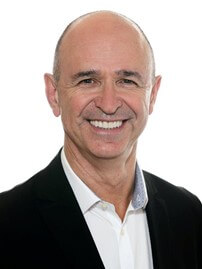Dr Peter Lachman examines climate change in healthcare and what can we do.

Over the past month, climate change has been at the top of the agenda with the COP26 conference in Glasgow. Politicians and climate change activists have flocked to Glasgow and many pledges and future promises to make a difference have been made. If things go as they have done in the past, potentially nothing much will change, as the politicians will go home, and the activists will continue to protest and demand change.
However, we have to change. We really do not have a choice. The Lancet Countdown on Health and Climate Change provides a comprehensive overview of the impact of climate change on the health of communities around the world. It is a call to action, both in our personal and our work lives. The question is, what can we achieve by the time of COP27?
we need to report the carbon cost of our work just as we do with the financial cost
We in healthcare must make climate change an integral part of our daily agendae. The first step is to acknowledge and accept that we have a problem. In a review of the impact of healthcare on the climate by Healthcare without Harm, it is estimated that the “climate footprint of healthcare is equivalent to 4.4% of global net emissions (2 gigatons of carbon dioxide equivalent).” It is estimated that U.S. healthcare is responsible for almost 10% of the USA’s greenhouse gas emissions. The figure is likely to be similar in other upper income countries.
We need to consider how we can implement the HSE Climate Change Strategy. The strategy “is the first step on the pathway to achieving a more sustainable health system. It sets out the Health Services strategic plan to deliver on our commitment to become a leading sustainable organisation delivering low carbon quality sustainable healthcare, with the purpose of preserving natural resources, reducing carbon emissions, mitigating the effects of climate change and safeguarding high quality patient care.” This high level strategy aims to raise the profile of sustainable healthcare, so that we can reduce the carbon footprint of healthcare. Focus areas include improving energy usage, decreasing water waste, green procurement and designing facilities and processes to be climate friendly.
Everyone has a role to play. From a practical point of view what can we in the frontline do?
- Leadership is key and every organisation requires leadership for sustainability at executive, operational and clinical levels.
- Carbon assessment is a daily requirement, so we need to report the carbon cost of our work just as we do with the financial cost. Every action we take needs to have an assessment of the cost in terms of carbon.
- Each facility needs to move beyond the strategy to concrete action that can be taken to improve the way we work, so that it is more climate friendly.
- This requires us to think differently both in management and in clinical care.
- We can have active programmes to improve use of water and energy, e.g. turning off equipment and lights, assessing our water usage and having improvement projects to decrease energy and water use.
- Any new facility needs to be built with green principles in design and operation.
In clinical care we can look at processes to save carbon in every area. A few examples:
- The American Journal of Radiology has highlighted the amount of energy used by different investigations, e.g. one MRI uses up to 26 households’ annual use of energy so, where possible, use of ultrasound is more climate friendly. Keeping PACS and MRI and CT scanners running also consumes wasted energy. In clinical laboratory investigations there is considerable scope to decrease waste and the use of carbon.
- A study of the carbon footprint of five common pathology tests in Australia demonstrated that there is an opportunity to decrease the carbon footprint of phlebotomy and sample collections.
- In surgery there is great potential to make difference. A recent review of the carbon footprint of surgery found that the most carbon costly part of the OR is the use of electricity and consumables. Greening the operating room is a way forward, but more research is required.
One MRI uses up to 26 households’ annual use of energy so, where possible, use of ultrasound is more climate friendly
Eco-friendly care is now one of the domains of quality. In all our quality improvement projects on the RCPI Diploma in Leadership and Quality we ask for measurement of the carbon saved by the intervention to be an integral part of the projects. One of our recent projects demonstrated that by reducing just one set of investigations we could save a substantial amount of carbon. Others estimated the potential carbon saving by using telemedicine and digital health instead of bringing people to the outpatient clinic.
In the United Kingdom, the Centre for Sustainable Healthcare offers research and practical solutions that we can adapt and adopt. There is so much scope and so much to do. If there is the will, we can make a difference. Every healthcare manager must make climate change a priority in partnership with all healthcare personnel.

